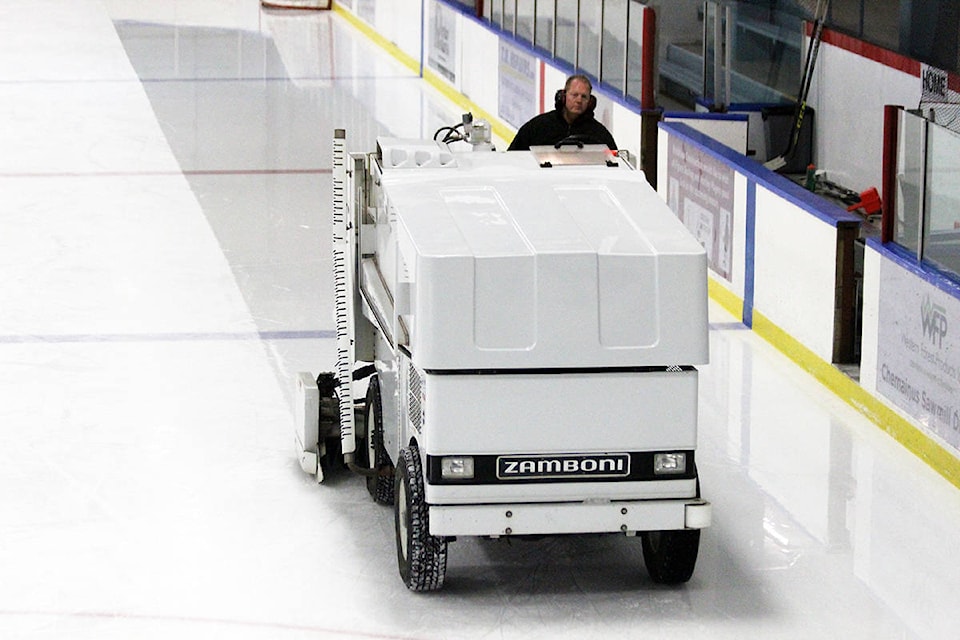Contrary to popular belief, the zamboni was not invented by a Canadian. It was, in fact, a Californian named Frank J. Zamboni. He patented the name in 1947.
On the other hand, it is true that two of the three major manufacturers of ice resurfacing machines in North America are Canadian, including Resurfice Corporation of Brantford, Ontario, and, since 2016, Okay Elektra of Terrebonne, a suburb of Montreal. All offer electric models.
At its October 18 meeting, North Cowichan Council approved a motion by the Environmental Advisory Committee, based on a report and recommendation from the Parks and Recreation Department, to fund the purchase of an electrically driven zamboni for Fuller Lake Arena.
Zambonis are complicated machines. The self-contained, highly agile mobile system must clean the ice, shave it smooth, remove and store ice debris, and provide an even layer of warm water that will freeze giving a strong smooth surface to the ice. All this has to be done in about 15 minutes for a typical rink with the process repeated at roughly hourly intervals while the ice is in use.
Models vary, but among available features are systems for cleaning the ice surface by spraying water on it, vacuuming it up, filtering and re-using it; shaving the scored ice surface, gathering the shavings by means of a horizontal auger (a screw-like device), lifting the shavings to the large storage tank, by means of another auger; spraying fresh water onto a fabric curtain that distributes it onto the ice surface before freezing. This water is often filtered before use and heated to drive off dissolved gases as well as to melt the underlying ice to enable a strong bond with the shaved ice surface. Some are equipped with rotary brushes to clear debris from corners or along the boards. Following these processes, the zamboni operator must quickly and easily dump the shavings, also known as snow, for disposal.
At Fuller Lake Arena, this process takes place an average of 12 times a day, about 2,800 a year, totaling some 700 hours of operation.
There are a number of reasons for going electric. For one, it eliminates the pollution inside the arena from carbon monoxide and nitrogen dioxide. Both are potentially dangerous exhaust gases given off by internal combustion engines.
Though electric zambonis are currently more expensive than propane powered systems, much of this cost difference is offset over time by lower operating costs. Typical price today of a propane vehicle is about $120,000. An electric model is around $180,000.
Operating cost for the electric, however, is much lower. Propane fuel for a year is about $5,000; electricity is about $1,000. Maintenance for the internal combustion engine is about $5,000; for the electric, it can run to about $3,000. A one-time cost of $1,000 for a charging station will be required.
Another factor is the cost of battery replacement at intervals of five to seven years. Current battery costs are estimated at about $12,000. On the other hand, with the rapid pace of battery development and the savings accruing from high volume production for the automotive industry, it is reasonable to suppose this cost will decline sharply even before the need for a first replacement in perhaps six years’ time.
By investing in this relatively new technology, North Cowichan will be in good company. On Vancouver Island alone, the municipalities of Oak Bay, Saanich, Port Alberni, Campbell River and Nanaimo all operate electric zambonis and all say they would do it again.
Another reason for going electric in this era of climate change: it’s the right thing to do.
Tom Masters is a writer and a resident of Chemainus.
